The 13 essential Bob Dylan albums
Out of 34 studio LPs, is this the definitive set?
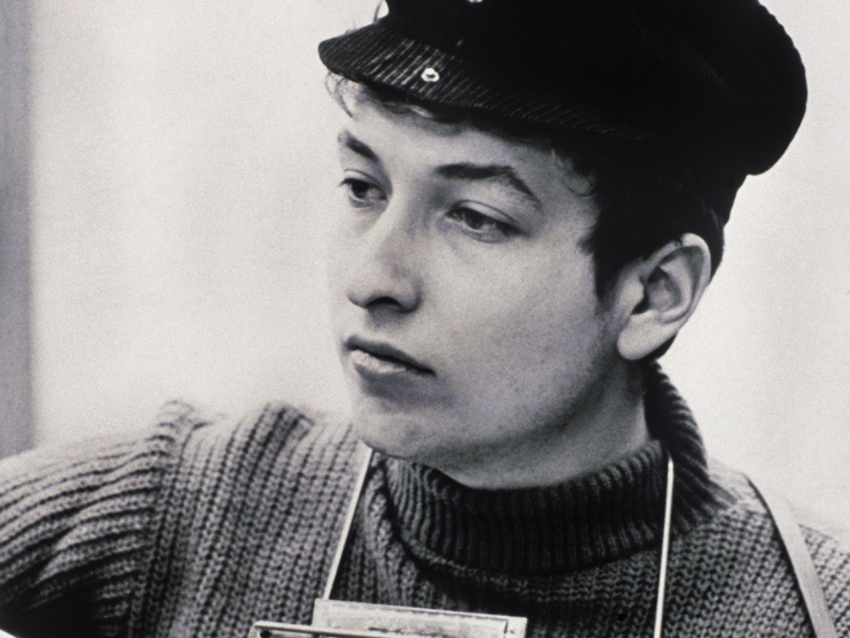
13 essential Bob Dylan albums
Award-winning, lauded, acknowledged and praised, he is master of traditional and contemporary folk, rock, folk-rock, ballad, country, lyric writing and singing.
Dylan has released 39 studio albums, 95 singles, 13 live albums, Bootleg Series collections and 19 compilations. Picking out the essential cuts from such rich pickings isn't easy, but the following 13 albums represent - in our opinion - Dylan's finest recorded moments.
We’ll kick-off, of course, at the beginning: his eponymous debut…
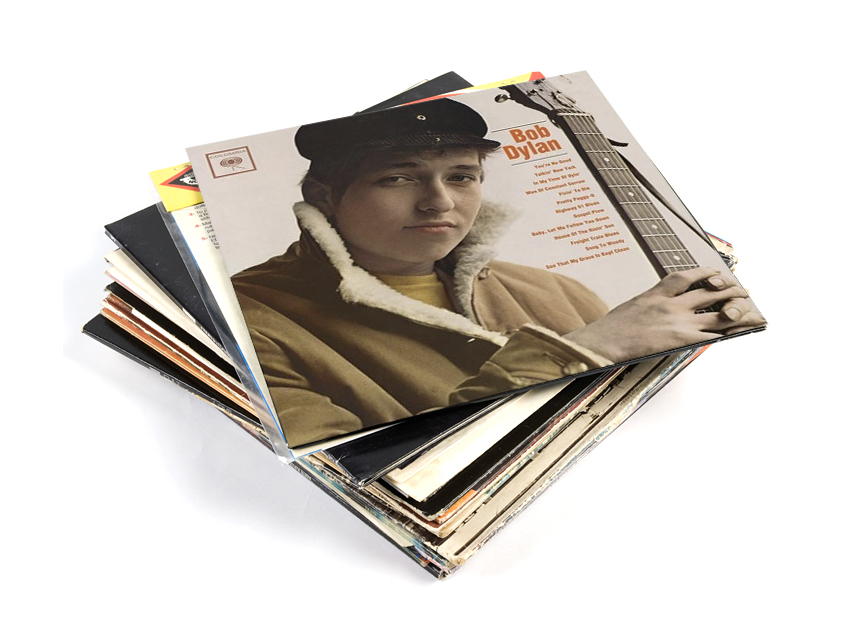
Bob Dylan (1962, Columbia 8579)
His debut album features two of his original songs; the rest are folk standards. It brought to an audience outside tight US folk circles a guitar and harmonica man who was clearly different.
Song To Woody pays tribute to the inspiration he found in Woody Guthrie and shows how much the young Dylan absorbed folk rhythms and traditional culture.
House Of The Rising Sun was arranged by his then friend, Dave Van Ronk, and critics think Dylan’s voice was the most distinctive feature of the whole work. Although Dylan himself was never happy about it and it didn’t sell well, this eponymous LP is essential listening.
Listen: Dylan's inspiration: Woody Guthrie - This Land Is Your Land
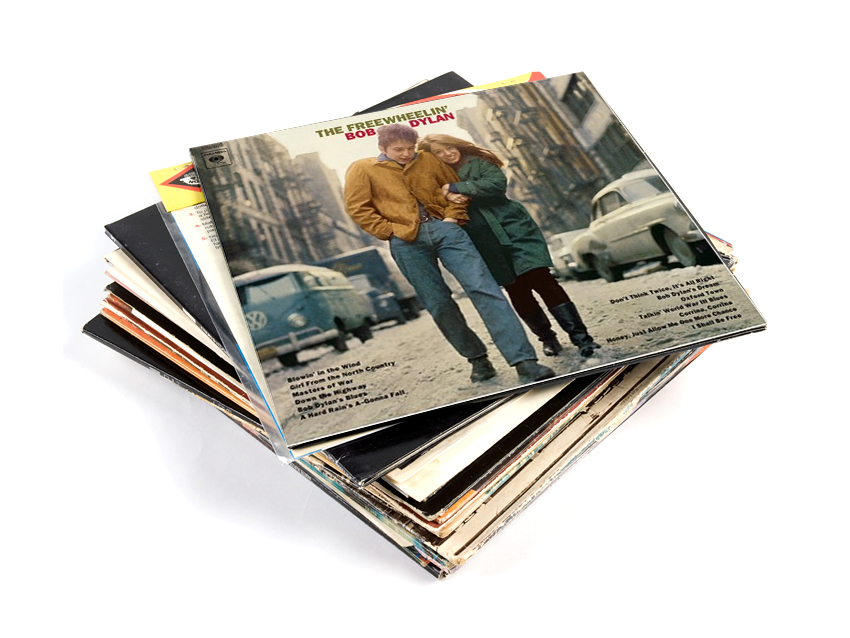
The Freewheelin' Bob Dylan (1963, Columbia 8786)
This one, ranked at 97 in the 500 Greatest Albums of All Time by Rolling Stone, carries 11 of his own writings: contemporary words (bitter, surreal, humorous, profound) set to traditional melodies.
Blowin’ In The Wind became one of his most famous singles, an anthem for the 1960s. Alongside Masters Of War and A Hard Rain’s A-Gonna Fall, it led to Dylan being proclaimed the voice of a generation. Though he resented the label, many fans saw him as a figurehead of the anti-war and civil rights protest movements of the '60s.
Girl From The North Country and Don’t Think Twice It's All Right set off in other musical directions, and almost all of the songs have been covered repeatedly over the years, showing their enduring appeal.
Listen: Bruce Springsteen covering Blowin' In The Wind
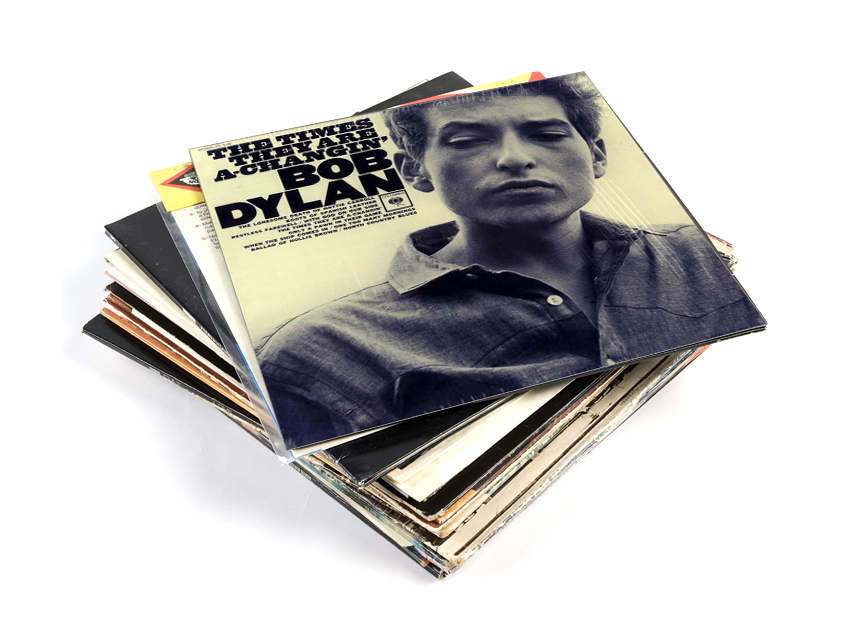
The Times They Are A-Changin' (1964, Columbia 8905)
This was the first Dylan album to contain entirely original material, dealing with social reality, poverty and racism, as well as highlighting social changes and the zeitgeist of the 1960s.
Derived musically from Celtic ballad, the title track became another Dylan hallmark, a song with purpose, voicing timelessly the young people’s cry: ‘don’t block up the halls’.
Some see a Biblical influence: "the first shall be last and the last first" in "the order is rapidly fadin'/and the first one now/will later be last".
Ballad Of Hollis Brown, With God On Our Side, One Too Many Mornings, North Country Blues, Only A Pawn In Their Game, and When The Ship Comes In, mix topical politics, forgiveness, anger, and injustice with tantalising biographical snippets from Dylan’s life.
Listen (and watch): Peter, Paul & Mary covering The Times They Are A-Changin'
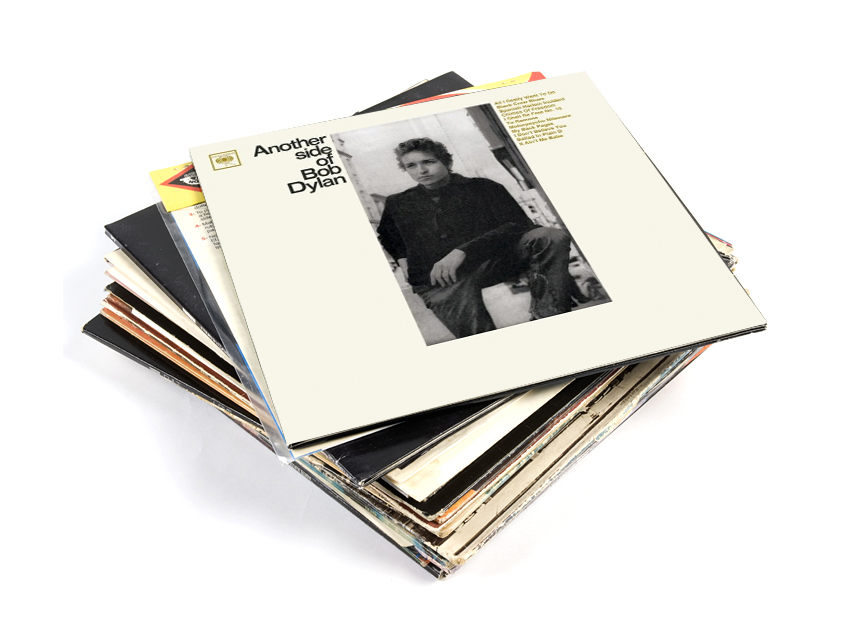
Another Side Of Bob Dylan (1964, Columbia 8993)
Although he was not fond of the title himself, it represented a change of direction. Still all his own creations, there are no political ‘finger-pointing’ lyrics on this. He still performs solo with guitar and harmonica (and piano on one), but is moving from folk-song form.
The Beatles first US visit affected him, like many, and he absorbed them into his own emerging styles: "their chords were outrageous, their harmonies made it valid".
It was March 1964 that he rented an electric guitar; his relationships with Joan Baez and Suze Rotolo were ending and his first experiences with hallucinatory drugs occurred.
All I Really Want To Do, Black Crow Blues, Chimes Of Freedom, I Shall Be Free, To Ramona, My Back Pages, Ballad In Plain D and It Ain’t Me Babe joined his growing catalogue of classics.
Listen (and watch): Folk-rock founders The Byrds (who owed it all to Dylan's songs) covering All I Really Want To Do
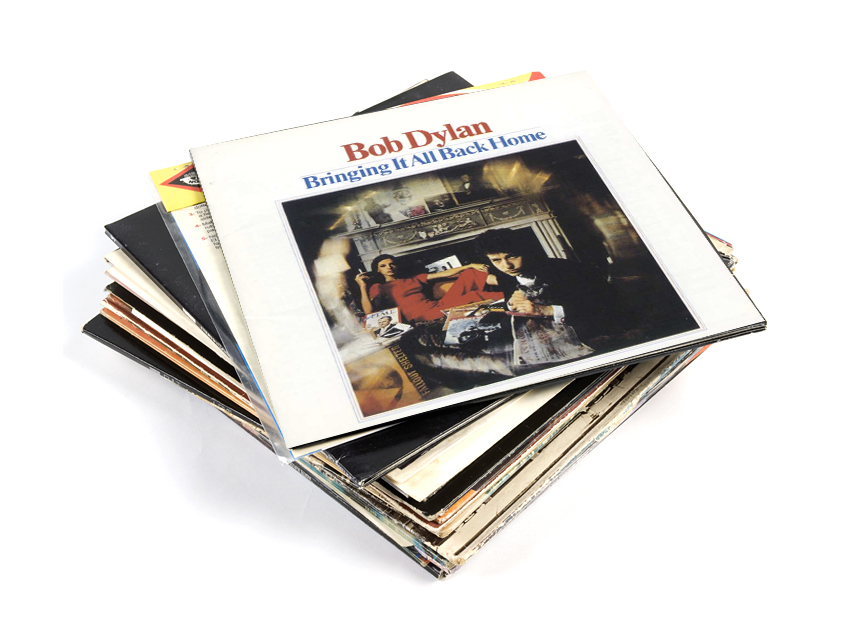
Bringing It All Back Home (1965, Columbia 9128)
Breaking more new ground, this has an electric side with a rock ‘n’ roll band, and an acoustic side. If anything he’d done in his life to date was controversial, this topped it. Folk purists were up in arms when Dylan went electric.
At once, he distanced himself from folk and protest, yet Subterranean Homesick Blues is still anti-establishment. Tim Riley of the US National Public Radio said: "snagged by a sour, pinched guitar riff, the song has an acerbic tinge". Maggie’s Farm could be about slavery, and/or the protest movement.
She Belongs to Me, Love Minus Zero/No Limit, Outlaw Blues, On the Road Again and It’s All Over Now, Baby Blue speak of love’s paradoxes and bohemian lifestyles. Bob Dylan’s 115th Dream is surreal electric blues; Gates Of Eden is about lost innocence, and Mr Tambourine Man, about a giant Turkish tambourine (or a drug dealer, depending on interpretation), is acoustic psychedelia. It’s Alright Ma (I’m Only Bleeding) is arguably, back to politics.
Listen (and watch): the famous card sequence of Subterranean Homesick Blues
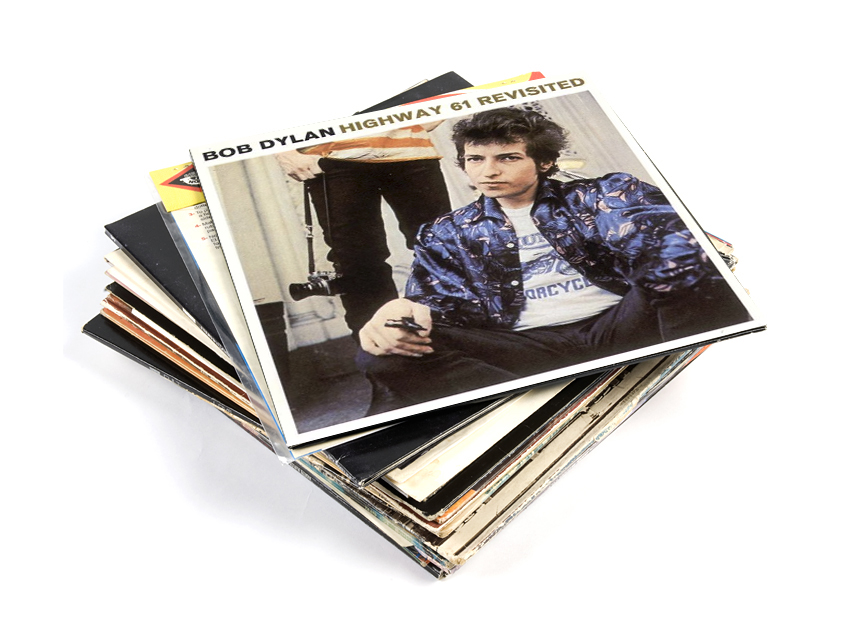
Highway 61 Revisited (1965, Columbia 9189)
This is essential because it’s blues-rooted rock and poetry. It’s all electric apart from the 11 minute acoustic Desolation Row. Biblical, literary and real characters combine with allegorical poetry accompanied by US south-western and Nashville-style guitar.
The album picks up the blues tradition of road songs, with the actual 1700 mile highway linking his own childhood and youth significances with American cultural history. Like A Rolling Stone was revolutionary for its electric guitar licks, organ chords and Dylan’s unique vocals. It is variously about revenge on the phoney, and compassion.
The title track is led by Mike Bloomfield’s ‘razor slash slide guitar’ and shows the highway to be wide, with room for endless drifting people. Tombstone Blues parades historical characters with veiled hints at Vietnam. It Takes A Lot to Laugh, It Takes A Train to Cry is like much Dylan material, reinvented with two versions, one guitar-driven, the second slow blues.
From A Buick 6 is shaped from blues riffs; Ballad Of A Thin Man could be politics again, hitting the counterculture of the 1960s. Queen Jane Approximately is about falling from grace. Dylan took 16 takes to record Just Like Tom Thumb’s Blues, with its nightmares, literary references and guitar, drums and two pianos.
Listen: My Chemical Romance covering Desolation Row
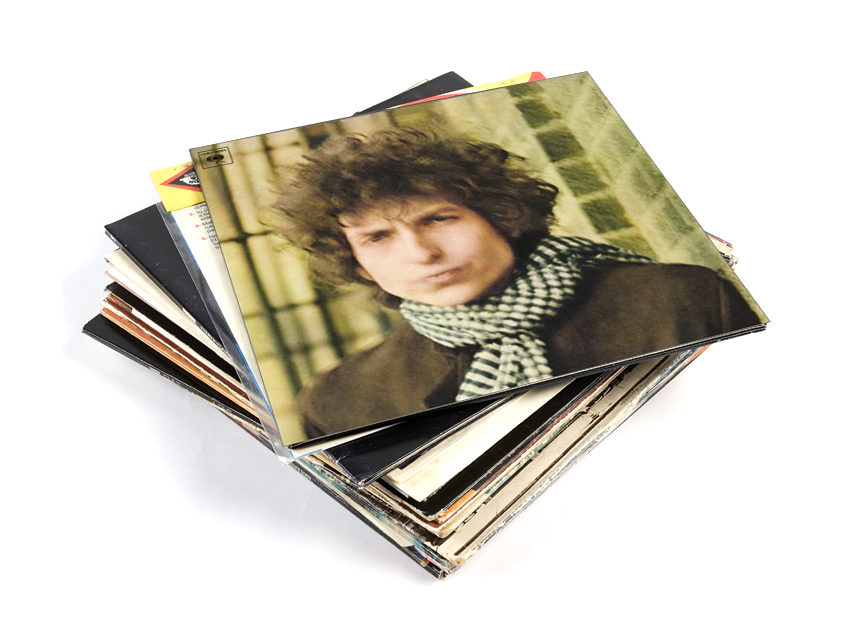
Blonde On Blonde (1966, Columbia 841)
The recording of this started in New York, but then switched to Nashville and its session musicians and the predecessors of The Band came on board allowing Dylan to take blues and folk-rock into yet another direction. There are a lot of love (ending) songs, and critically acclaimed lyrics that make Blonde On Blonde an essential.
Stuck Inside Of Mobile With The Memphis Blues Again and Rainy Day Women see Dylan in fun form, saying ‘relax’. Pledging My Time is more Chicago blues, defined by Robbie Robertson’s guitar lead. One Of Us Must Know (Sooner Or Later), is a song of ended love, as is the slow-blues Temporary Like Achilles. Leopard-Skin Pill Box Hat sees Dylan in sarcastic, jealous put-down form about a former lover.
4th Time Around and I Want You are about love. Most Likely You Go Your Way (And I’ll Go Mine) is a blues beat about parting lovers, and Absolutely Sweet Marie is a Memphis- influenced love song of sorts. Obviously 5 Believers is called a ‘roadhouse blues’ number and Visions Of Johanna is in a different league, about being stranded.
But it’s the epic Sad-Eyed Lady Of The Lowlands, over 11 minutes of surreal poetry about the female figure that sets it apart. Images galore peg it as an ode to his wife Sara Lownds. It’s a list song, in 6/8 waltz arrangement with Dylan on acoustic guitar and harmonica. The musicians were all expecting a three minute song, but in the studio, Dylan just kept on with new verses.
Listen: rather ironically, Dylan's ex lover Joan Baez covering Sad Eyed Lady...
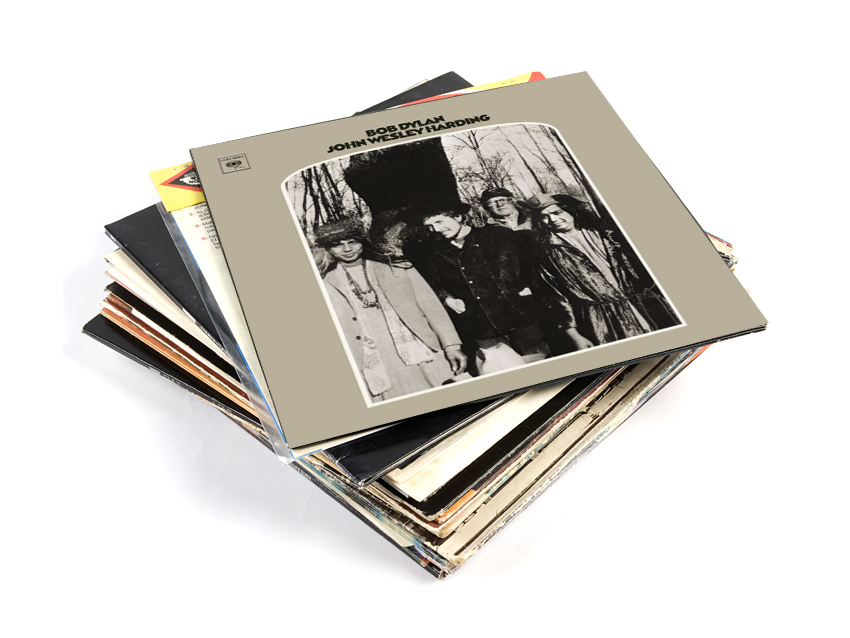
John Wesley Harding (1967, Columbia 9604)
It's hard to choose between this and his softer crooning of Nashville Skyline (1969, Columbia 9825) with its beautiful ballad Lay Lady Lay, but in the search for essential albums, country needs a look in. Harding sees Dylan coming back to acoustic, more traditional roots and less-surreal lyrics than previously. Shorter lines, pared lyrics were the order of the day. Every word counts.
There are influences/references from The Bible; there is a folky, old-America and history feel about it. The title song is about a Texas outlaw; As I Went Out One Morning is about temptation; I Dreamed I Saw St Augustine harks back over a thousand years in history; The Ballad Of Frankie Lee And Judas Priest has been called a ‘morality song’.
Dear Landlord, Drifter’s Escape and I Am A Lonesome Hobo speak of society’s rejects. Down Along The Cove and I’ll Be Your Baby Tonight utilise pedal steel guitar, anticipating country-rock. But All Along The Watchtower is perhaps the best-known (from Isaiah), through Jimi Hendrix’s 1968 feedback-drenched version with the full Hendrix ‘Experience’.
Listen: Jimi Hendrix - All Along The Watchtower

Blood On The Tracks (1975, Columbia 32235)
This saw a return to critical acclaim for his work. He denied it was autobiographical, but his son Jakob said it was "his parents talking", so it is 'confessional singer-songwriter'. It was going to be cut with a full electric band, but Dylan changed his mind, moving across musicians as he created a stripped down acoustic feel as he went along in the studio.
Tangled Up In Blue is a multi-dimensional song influenced by Cubist paintings; Simple Twist of Fate’s popularity surprised Dylan; You’re A Big Girl Now is seen as a sequel to Just Like A Woman; Idiot Wind with full band backing added later was in the pain-confession, break-up of love mould.
Lily, Rosemary And The Jack Of Hearts is another of his long, narrative accounts of different left-field characters drawn from life, fiction and imagination. Shelter From The Storm sees him in dream-like, more mellow mood without the vengeance and Buckets Of Rain is a love song with acoustic and bass guitars tuned to open E.
Listen (and watch): Dylan performing Tangled Up In Blue
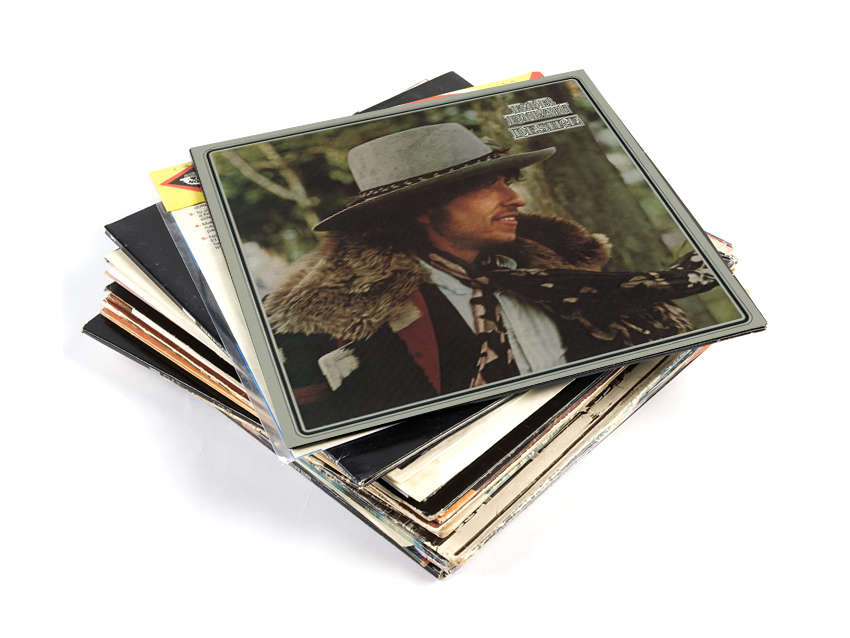
Desire (1976, Columbia 33893)
Unusually, most of the songs were co-written with Jacques Levy. It consists of mainly story songs, including two controversial numbers. One, the 11-minute Joey, which critics claimed glorified the mafiosi Crazy Joe Gallo who Dylan presented as a gangster with morals.
Two, Hurricane told the story of the wrongful allegations of triple murder against black boxer Rubin Carter. This was a return to political grandstanding, but the power of the song makes it essential listening. British choreographer Christopher Bruce used it to build a dance on.
Isis has been called a ‘symbolic travelogue’ about love and deception; One More Cup Of Coffee is about a girl from a family of drifters/gypsies and loyalty in love in harmonic minor scale. The Mexican feel to Romance In Durango and the panama hat and colonial feel of Black Island Bayagain show Dylan at his most lyrically creative with violin, bellzouki and accordian supplementing expected musicians.
Sara is clearly a display of his private life with his wife, during separation. It’s a love song, a simple structure with quadrophonic sound mix, backing vocals and an admission that he wrote Sad Eyed Lady of the Lowlands for her in New York’s Chelsea Hotel. Mozambique was believed to have started as a game, to see how many words rhyming with ‘ique’ they could find!
Listen: Bob Dylan - Hurricane
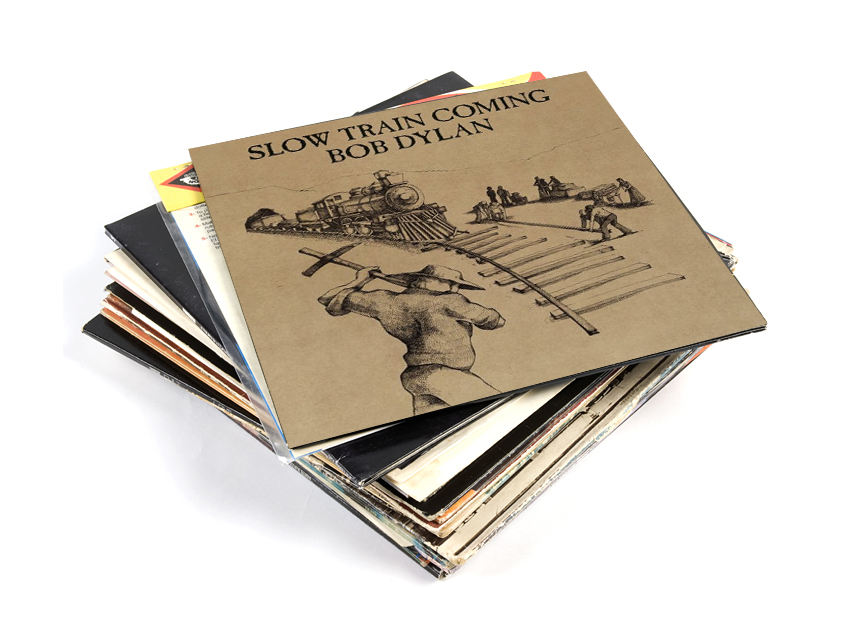
Slow Train Coming (1979, Columbia 36120)
This needs to go with Saved (1980, Columbia 36553) and Shot Of Love (1981, Columbia 37496) as exemplars of his overtly Christian songwriting. From a man born a Jew who became a born-again Christian, this was always going to becontroversial. Not surprisingly, his music reflects that.
This period alienated many fans, while producing new ones. His faith and the importance of Christian/Biblical teaching underpin the songs. Gotta Serve Somebody is a song that sums up the mood. It says that you may be an ambassador, boxer, socialite, businessman or thief, but you got to serve somebody(thing), it could be the devil or the Lord. For him, it can only be Jesus.
Not all the songs are his own. Saved’s A Satisfied Mind is a much-covered hit, but it’s the sentiment that counts for him. From the Shot Of Love album, he combined secular with religious tunes. Perhaps the most recognised is Every Grain Of Sand, a possible update of Chimes Of Freedom inspired by Genesis, Psalms, Mark, Matthew and Luke and William Blake’s poetry: "to see a world in a grain of sand".
Listen (and watch): Bob Dylan - You Gotta Serve Somebody
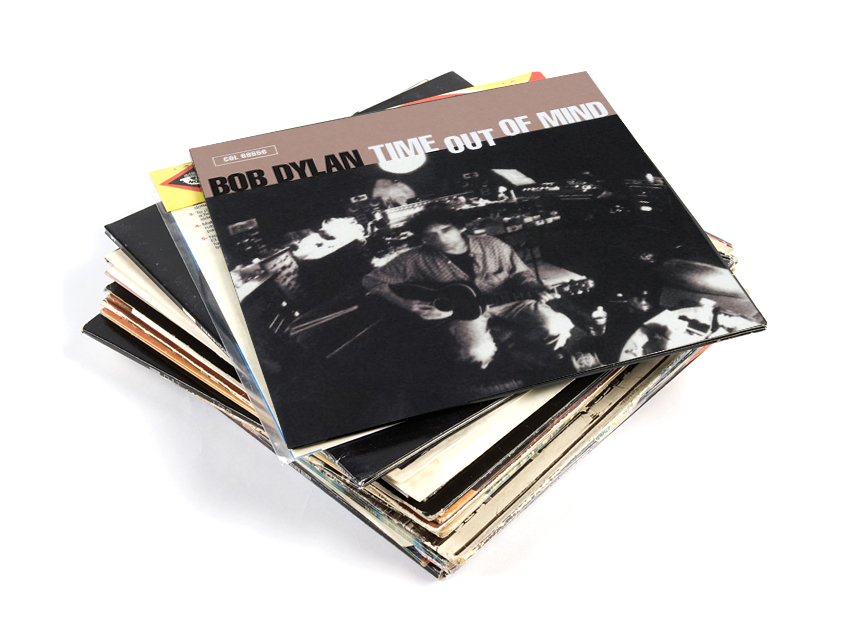
Time Out Of Mind (1997, Columbia 68556)
Reportedly struggling with his musical identity through the 1980s-'90s, Dylan earned high acclaim for this one, winning three Grammy Awards and inclusion in Rolling Stone’s 500 Greatest Albums Of All Time. Producer Daniel Lanois used microphone placement and strategic mixing to give the album a unique flavour.
Love Sick featured what Lanois described as "the voice treated like a harmonica when you overdrive it through a small guitar amp". Dirt Road Blues improvises out of a country-blues riff; Not Dark Yet continues the experimentation of sound recording, which is a new musical dimension and Cold Irons Bound is a "biting track, with ricocheting guitar licks, rockabilly drums, distorted organ and a floating voice".
Perhaps the best known track is Make You Feel My Love, a now much-covered ballad beloved on X-Factor-like shows and audition hopefuls.
Listen: Adele covering Make You Feel My Love
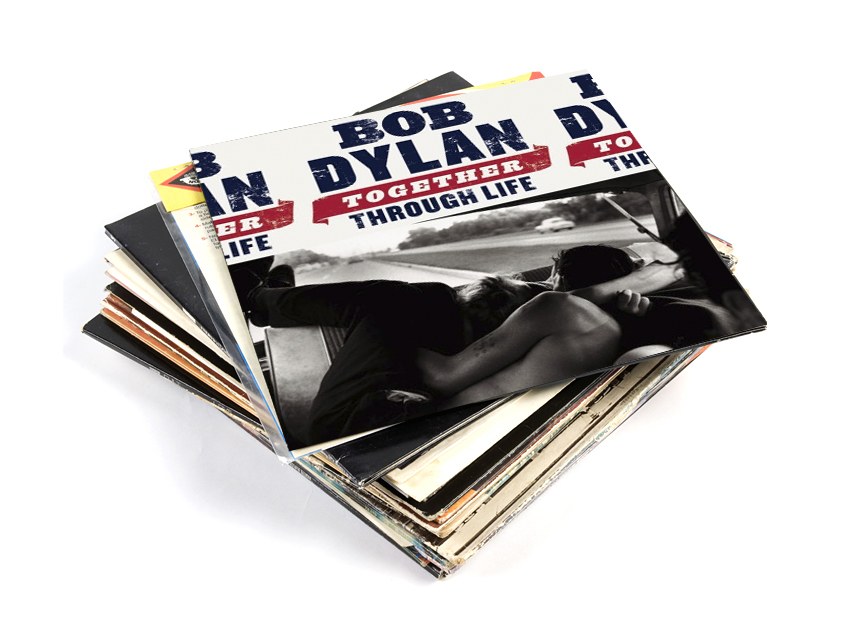
Together Through Life (2009, Columbia)
This is his only album to top UK and US album charts consecutively. All but one track is co-written with Robert Hunter. It has been said the sound is similar to the old Chess and Sun Records labels, which he acknowledged as an "effect of the way instruments were played".
Beyond Here Lies Nothing is a quote from Ovid; it was nominated for a Grammy for Best Male Vocal, Rock. Life Is Hard has been labelled a ‘bleak ballad’ and My Wife’s Home Town contains the chorus line: "I just wanna say that Hell’s my wife’s home town".
The album is again a mix of genres and styles, it nods to his past, hums along with where he was at in 2009, and promises more great things to come as Dylan reinvents himself again. The track I Feel a Change Comin’ On says: "I feel a change comin’ on/though the last part of the day’s already gone".
Listen: Bob Dylan - Beyond Here Lies Nothin'
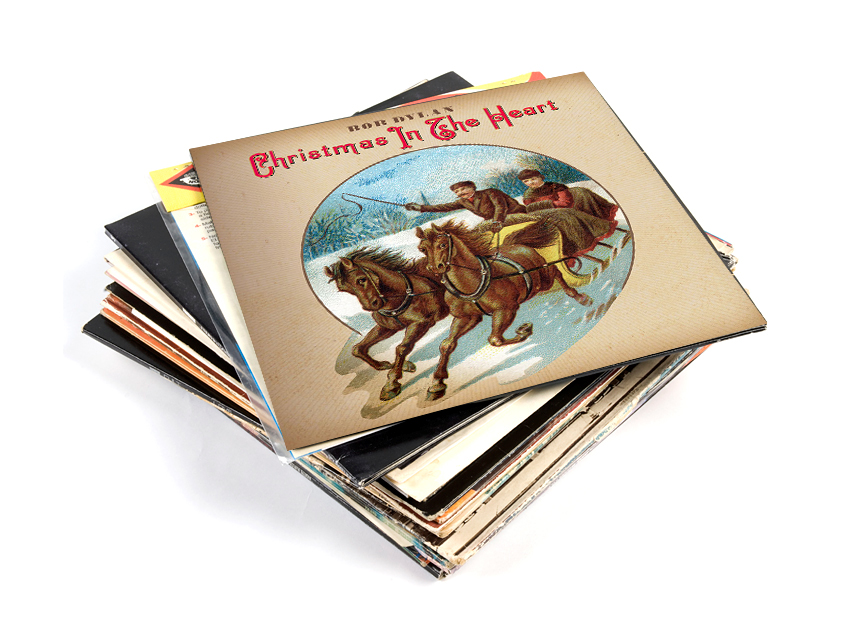
Others
There are others. Biograph (1985, Columbia) won awards as the best biographical musical material and includes some previously unreleased songs. And the Christmas album (Christmas In The Heart, 2009, Columbia 57323) is worth a listen, not just to hear Dylan singing Christmas schmaltz like Winter Wonderland, Little Drummer Boy and Have Yourself A Merry Little Christmas, but because as always Dylan is saying, "I’m doin what I’m doin...."
Liked this? Now read: A-Z of Bob Dylan
Connect with MusicRadar: via Twitter, Facebook and YouTube
Get MusicRadar straight to your inbox: Sign up for the free weekly newsletter
"Reggae is more freeform than the blues. But more important, reggae is for everyone": Bob Marley and the Wailers' Catch a Fire, track-by-track
“Part of a beautiful American tradition”: A music theory expert explains the country roots of Beyoncé’s Texas Hold ‘Em, and why it also owes a debt to the blues
"Reggae is more freeform than the blues. But more important, reggae is for everyone": Bob Marley and the Wailers' Catch a Fire, track-by-track
“Part of a beautiful American tradition”: A music theory expert explains the country roots of Beyoncé’s Texas Hold ‘Em, and why it also owes a debt to the blues









